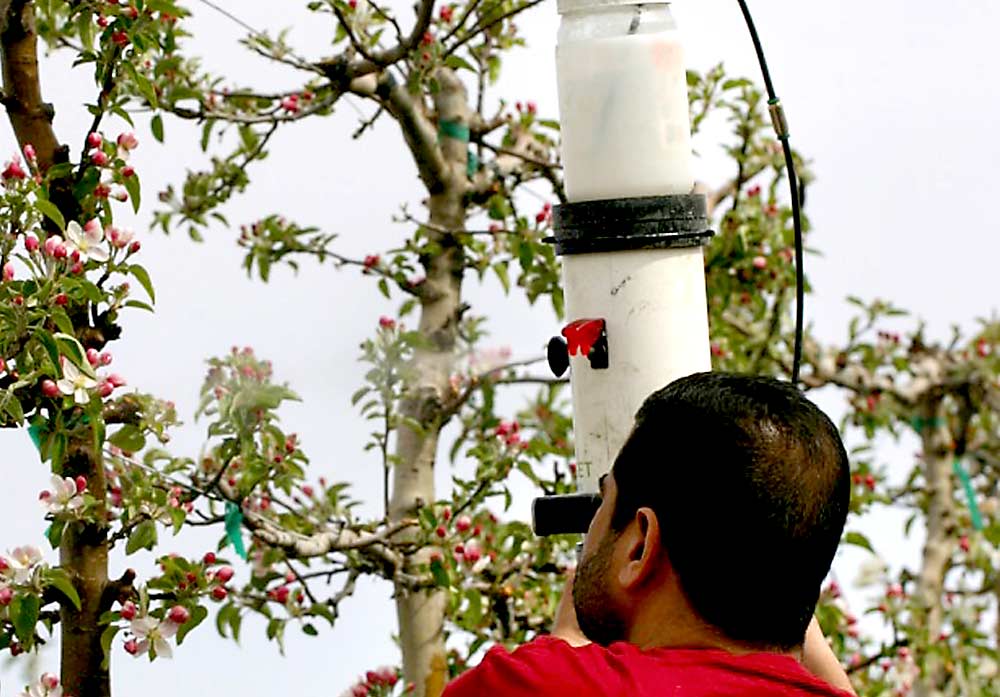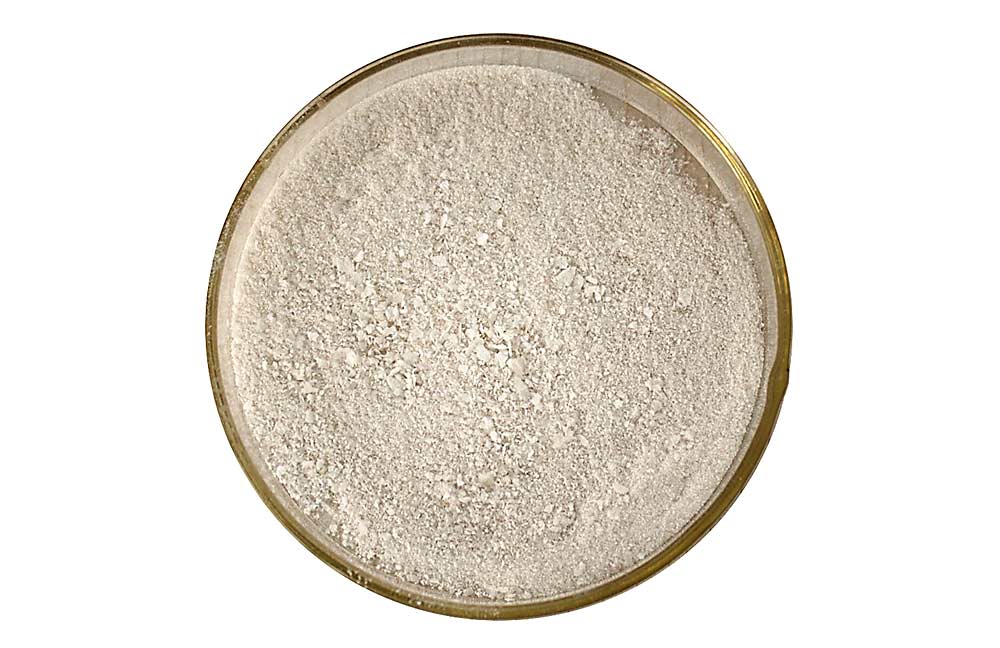
Washington State University graduate student Jassim Alhamid sprays a dispersal of cellulose nanocrystals on Scifresh apple blossoms near Prosser, Washington. (Courtesy Matt Whiting/Washington State University)
Washington State University researchers are studying how to use cellulose nanocrystals to insulate sensitive trees and buds against the cold.
So far, the stuff seems to work.
Cellulose nanocrystals, usually called CNC, are strong, tiny crystalline structures derived from cellulose, the natural polymers that provide all cell walls their strength and rigidity. Potential uses, ranging from plastic reinforcement to food additives to hydraulic fracking fluid, make them a multibillion-dollar arena of research.
Four researchers from WSU would like to use nanocrystals as a sort of spray-on jacket for fruit trees.
To try the concept, the team, led by horticulturist Matt Whiting and engineer Xiao Zhang, made CNC dispersals — or suspensions — of various concentrations and used a battery-powered electrostatic sprayer to apply them to trees and buds, then collected samples and tested the temperatures at which the plant tissue died in cold chambers.
They conducted trials on Rainier, Skeena and Selah cherries and Scifresh apples.
They learned they could boost cold-hardiness — a measurement of temperatures the plant tissue can withstand — by up to 7 degrees by applying the nanocrystals before the cold treatments.

Cellulose nanocrystals in a petri dish at a laboratory at Washington State University’s Irrigated Agriculture Research and Extension Center in Prosser. A team of researchers is experimenting with dispersing the crystals as a fluid to insulate fruit trees and buds from cold weather. (Courtesy Matt Whiting/Washington State University)
For most varieties, they noticed their biggest improvement between 19 degrees and 25 degrees Fahrenheit, the range in which pistil death rates start to shoot up rapidly for many cultivars.
For example, in the apple trial, bud loss was 100 percent at somewhere between 19 and 20 degrees in the untreated control group but at 16 degrees among the trees treated with a 2 percent concentration of CNC.
Meanwhile, at 23 degrees, 60 percent of untreated Skeena cherry buds died, but 100 percent of their treated counterparts remained viable.
Among the team’s other findings were that the benefits of the CNC lasted up to 48 hours after application and that concentrations of 2 percent and 3 percent delivered much better results than 1 percent.
Finding the right dispersal concentration of nanocrystals was tricky, Whiting said. Too thick and they get a viscous gel that won’t spray.
Zhang, a WSU chemical engineer, is working on a proprietary method of making the nanocrystal dispersal. Their two collaborators are WSU researchers Changki Mo and Bernardita Sallato.
Their work is funded by grants from the U.S. Department of Agriculture, the Washington Tree Fruit Research Commission and WSU’s Commercialization Gap Fund, for a total of roughly $547,000.
The next steps in their work involve experimenting with different concentrations and application rates, more accurately determining the substance’s longevity and trying to replicate their results with large-scale treatments. •
—by Ross Courtney






[…] The team is led by horticulturist Matt Whiting and engineer Xiao Zhang. Their research was recently featured in Good Fruit Grower Magazine. Read the article >> […]
[…] Xiao Zhang is researching how to protect fruit trees from the cold with nanocrystals. […]